
Welcome, fellow Windows enthusiasts! Today, we’re diving into the heart of Windows 11 to unravel the mystery of opening Task Manager. Whether you’re a seasoned user or just getting acquainted with the latest iteration of Windows, knowing how to access Task Manager efficiently is crucial for troubleshooting, monitoring system performance, and managing applications.
In this comprehensive guide, we’ll explore various methods to open Task Manager in Windows 11, ensuring you’re equipped with the knowledge to tackle any system-related issue confidently.
9 Working Ways to Open Task Manager on Windows 11
Here are nine reliable methods to open Task Manager seamlessly, ensuring you’re equipped to handle any system-related issues easily.
1. Open Task Manager in Windows 11 Using the Search Bar
The Search Bar is a handy tool located on the taskbar in Windows 11, typically positioned at the bottom of your screen and represented by a magnifying glass icon. It provides quick access to various functions and applications on your Windows 11 system.
1. Locate the Search Bar on the taskbar, indicated by a magnifying glass icon. Click the Search icon on the taskbar with your mouse cursor.
Alternatively, press the Windows key + S on your keyboard to activate the Search Bar.
2. Type “Task Manager” (without quotation marks) into the Search Bar. As you type, search results will appear below.
3. Look for the search result labeled “Task Manager,” and press Enter on your keyboard or click on the “Run as administrator” button.
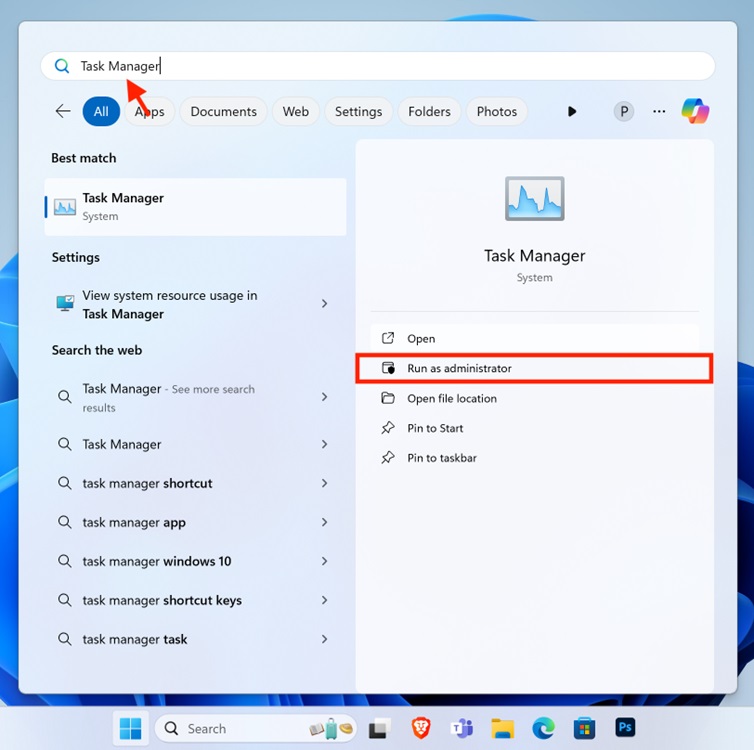
Task Manager will now open on your screen, allowing you to efficiently manage system processes and applications.
2. Open Task Manager in Windows 11 Using the Quick Links Menu
Navigating Windows 11’s features can be a breeze with the Quick Links menu, also called Power Menu. Here’s how to access Task Manager swiftly through this handy menu:
1. Locate the Start button on the taskbar, usually denoted by the Windows logo, and right-click on it.
You can also press the Windows key + X simultaneously to access the Quick Links menu.
2. A menu will appear on your screen after performing the previous step.
3. Look for the “Task Manager” option and click on it.
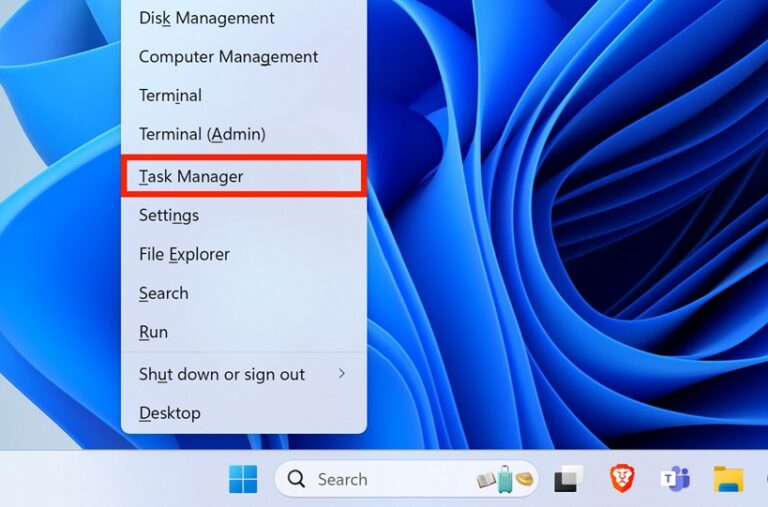
The Task Manager window will now display on your screen, providing insights into system performance and running applications.
3. Open Task Manager in Windows 11 Using the Taskbar
If you’re more comfortable with visual cues, accessing Task Manager directly from the taskbar is simple. Follow these step-by-step instructions to open Task Manager with ease:
- Locate the taskbar and right-click on it wherever you find an empty area with no icons or active windows.
- After right-clicking, a small menu, known as the context menu, will appear. From the context menu, locate and click on the option labeled “Task Manager.”
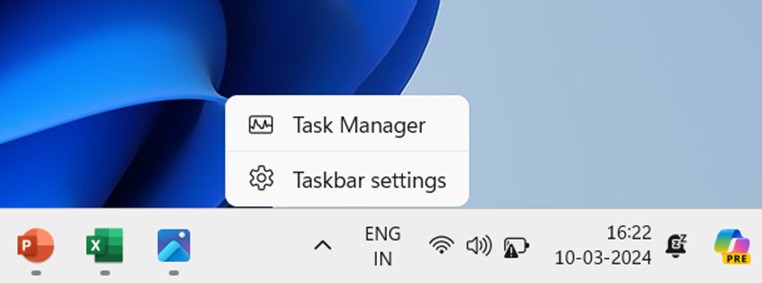
Wait for a moment, and Task Manager will appear on your screen, ready for use.
4. Open Task Manager in Windows 11 Using File Explorer
Task Manager is a robust utility within Windows 11, enabling users to monitor and control active processes running on their computer system. Here’s a step-by-step guide on how to open Task Manager using File Explorer:
1. Click on the File Explorer icon on your taskbar.
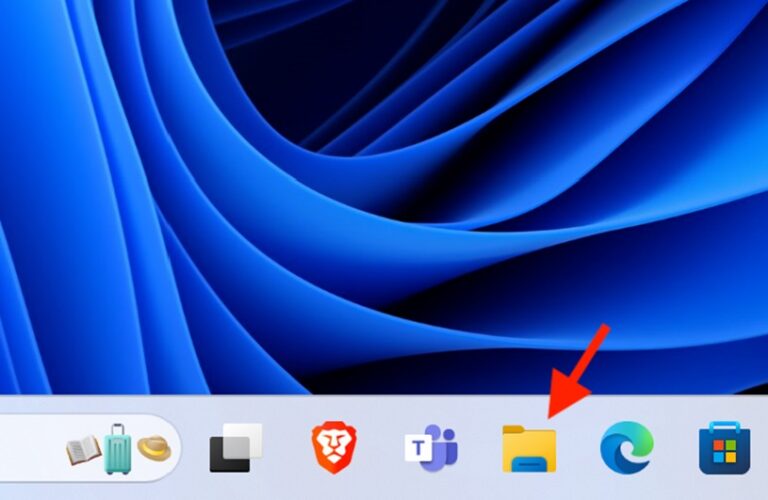
You can also press the Windows key + E shortcut on your keyboard to launch File Explorer.
2. Navigate to the “Windows” folder on your C: drive.
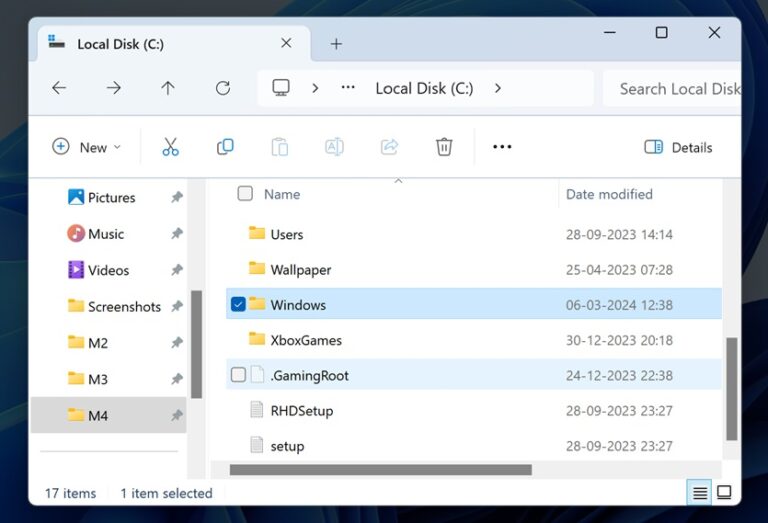
3. Once you are in the Windows folder, look for the “System32” subfolder within the Windows folder.
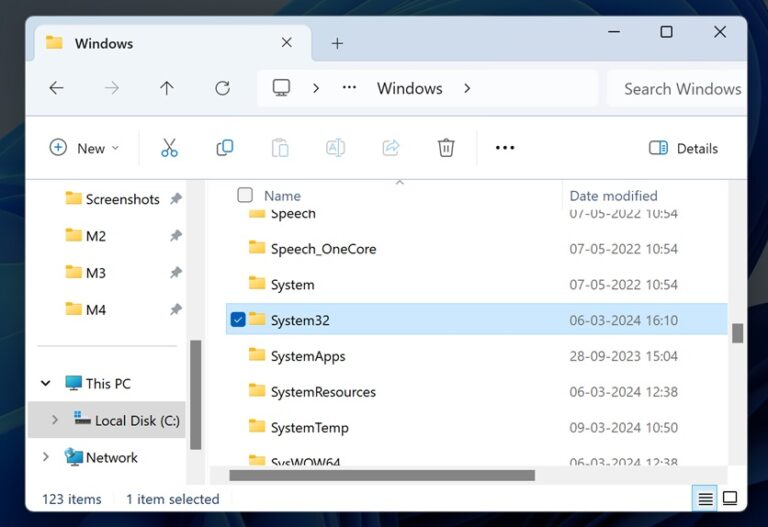
4. Inside the System32 folder, locate the “taskmgr.exe” executable and double-click on “taskmgr.exe” to open Task Manager.
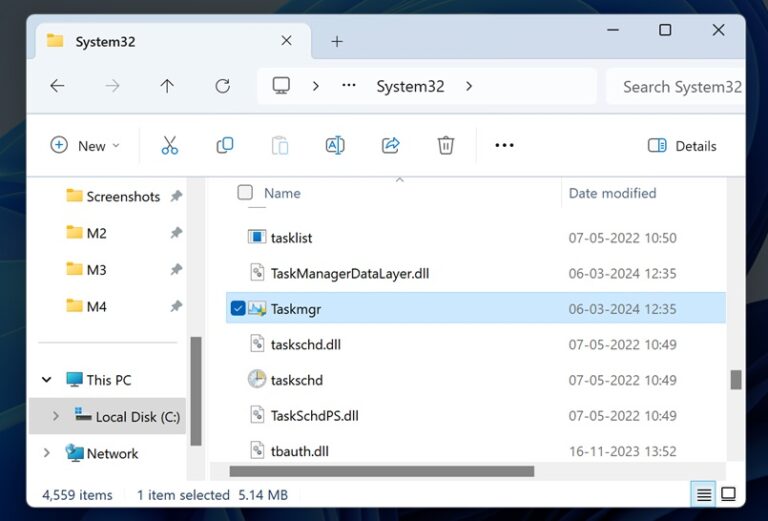
And this is how you can launch the Windows Task Manager using the File Explorer.
5. Open Task Manager on Windows 11 Using Keyboard Shortcut
If you’re someone who prefers using keyboard shortcuts for quick access to system tools like Task Manager, Windows 11 has got you covered! Follow these simple steps to open Task Manager using keyboard shortcuts:
1. Locate the Ctrl, Shift, and Esc keys on your keyboard.
2. Once located, press and release all three of them simultaneously.
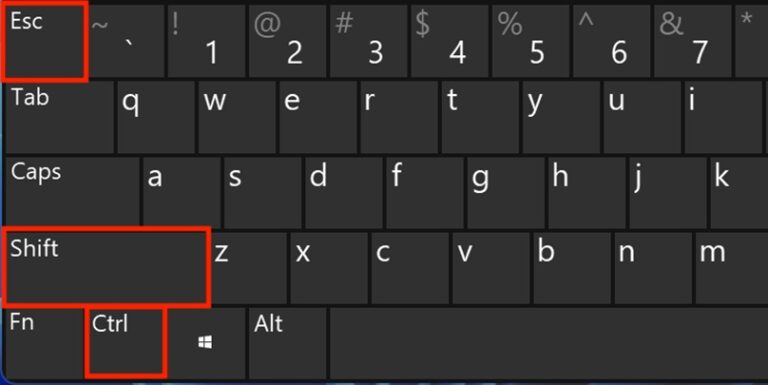
And that’s it. By following these simple steps, you can quickly open the Task Manager in Windows 11 using keyboard shortcuts.
6. Open Task Manager on Windows 11 Using Run
If you’re looking for a quick way to access Task Manager on your Windows 11 system, using the “Run” command is an efficient method. Follow the steps below to launch Task Manager using this approach:
1. Locate the Windows and R keys on your keyboard and press them simultaneously to open the “Run” dialog box.
2. In the text field of the Run dialog box, type “taskmgr” (without quotes), ensuring no spaces before or after the command, and press Enter or click OK.
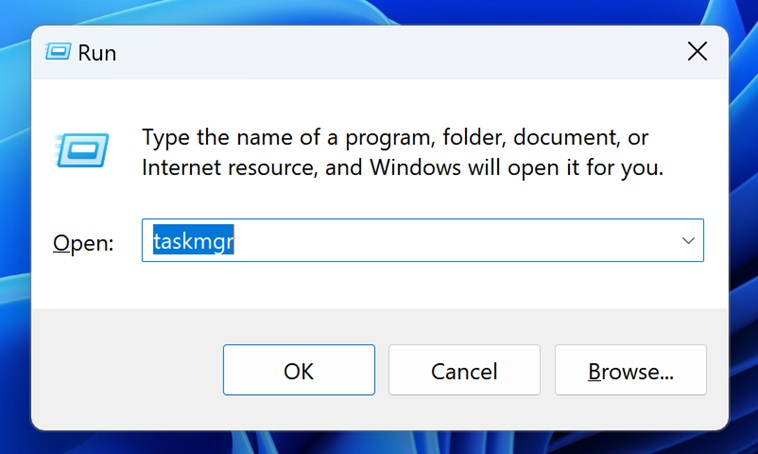
And this is how you can launch the Task Manager using the Windows Run Utility program.
7. Open Task Manager on Windows 11 Using PowerShell
Opening Task Manager using PowerShell provides a powerful way to manage your system tasks and processes. By leveraging PowerShell’s command-line capabilities, you can easily access Task Manager and perform system-level tasks.
1. To begin, click on the Start button or press the Windows key on your keyboard. Then, type “PowerShell” into the search bar.
2. From the main search result that appears in the right pane, click on the “Run as administrator” option to launch PowerShell with admin rights.
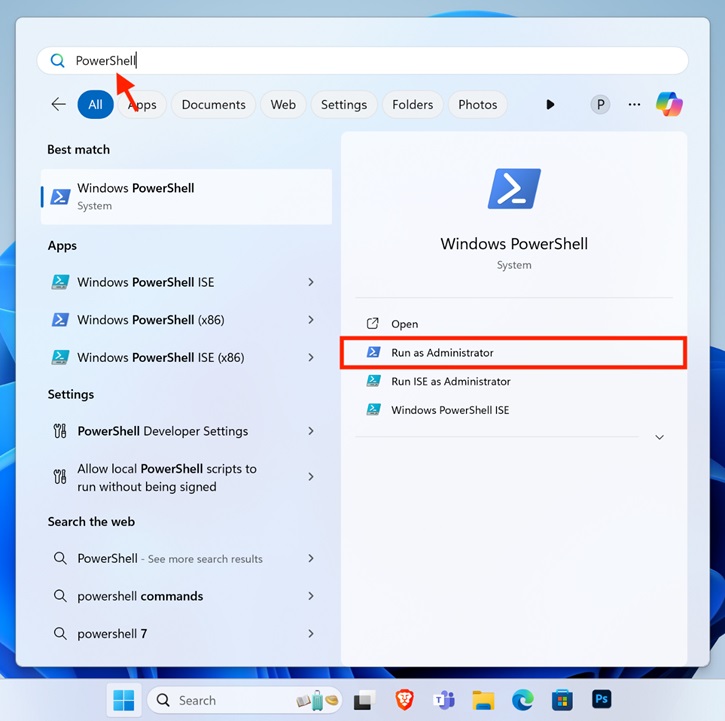
3. Once PowerShell opens, type the following command exactly as shown:
taskmgr
4. After typing the command, press the Enter key on your keyboard. This action will execute the command and launch Task Manager.
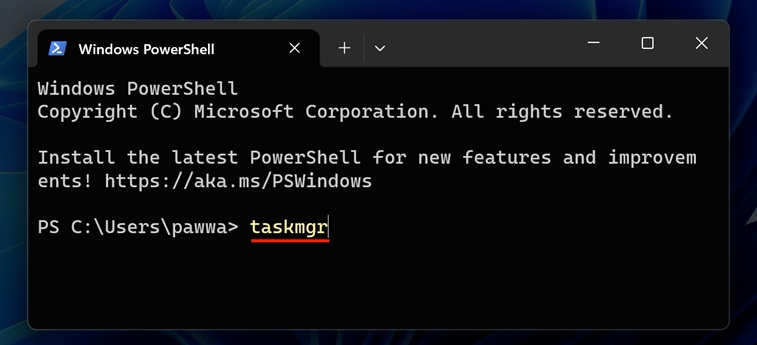
Task Manager will promptly appear on your screen, displaying system processes and performance metrics.
8. Open Task Manager on Windows 11 Using Command Prompt
Windows 11 also houses a second command-line utility called Command Prompt. So, besides PowerShell, Command Prompt is also a powerful yet similar way to open the Task Manager.
1. Click the Start button or press the Windows key on your keyboard. Then, type “Command Prompt” into the search bar.
2. Right-click on the Command Prompt app from the search results, and select “Run as administrator” from the context menu.
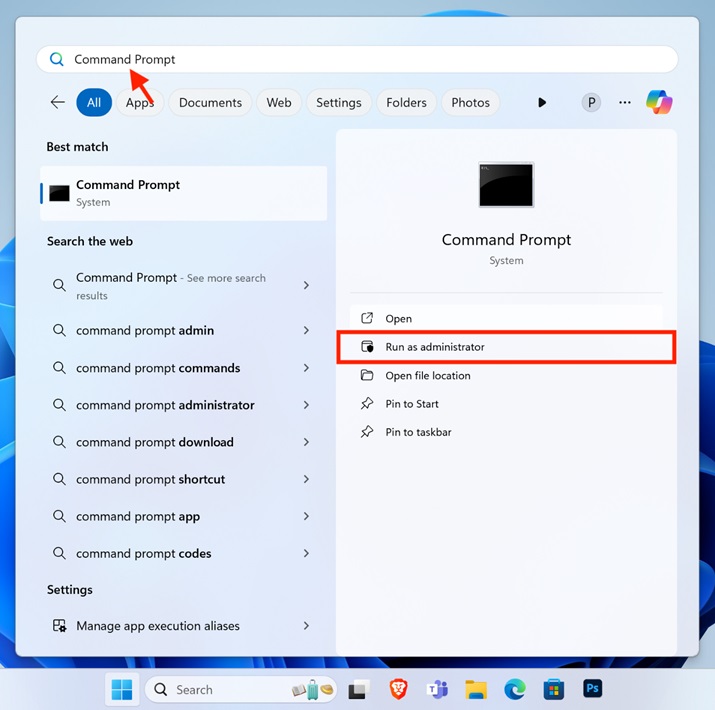
3. Once Command Prompt opens, type the following command into Command Prompt exactly as shown:
taskmgr
4. After typing the command, press the Enter key on your keyboard. This action will execute the command and initiate the process of opening Task Manager.
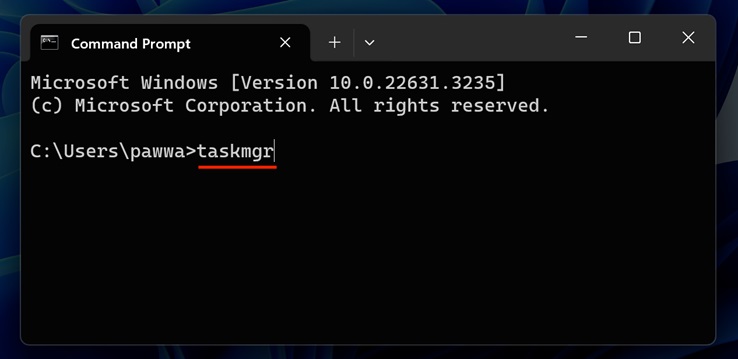
Congratulations! You have successfully opened Task Manager in Windows 11 using Command Prompt. You can now use Task Manager to monitor and manage processes on your computer.
9. Open Task Manager on Windows 11 Using Desktop Shortcut
Creating a desktop shortcut for Task Manager is a smart way to expedite access to this vital system tool. Follow these simple steps to set up a shortcut for Task Manager on your Windows 11 computer:
1. Navigate to your desktop screen and right-click on any empty space on the desktop to bring up a context menu.
2. In the context menu, hover your cursor over the “New” option and click on “Shortcut” from the submenu.
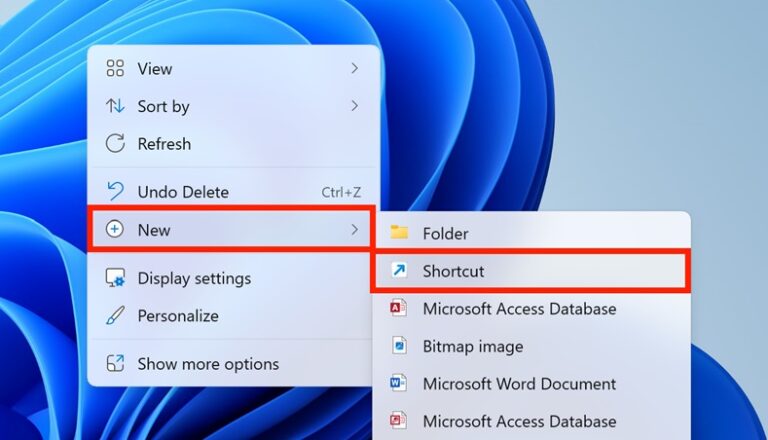
3. A “Create Shortcut” window will appear. In the location field, type “taskmgr.exe” (without quotation marks) and click on the “Next” button at the bottom right corner of the window.
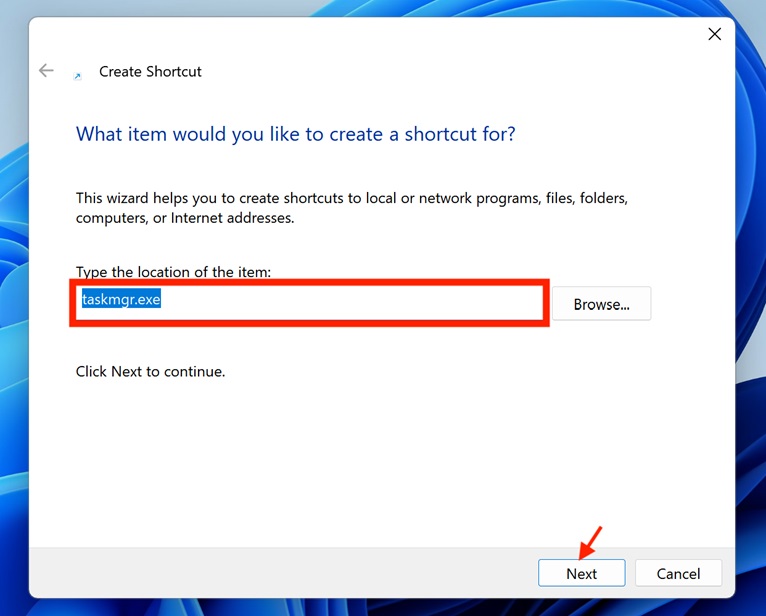
4. Now, provide a name for your shortcut in the prompted screen and click on the “Finish” button to finalize the creation of your shortcut.
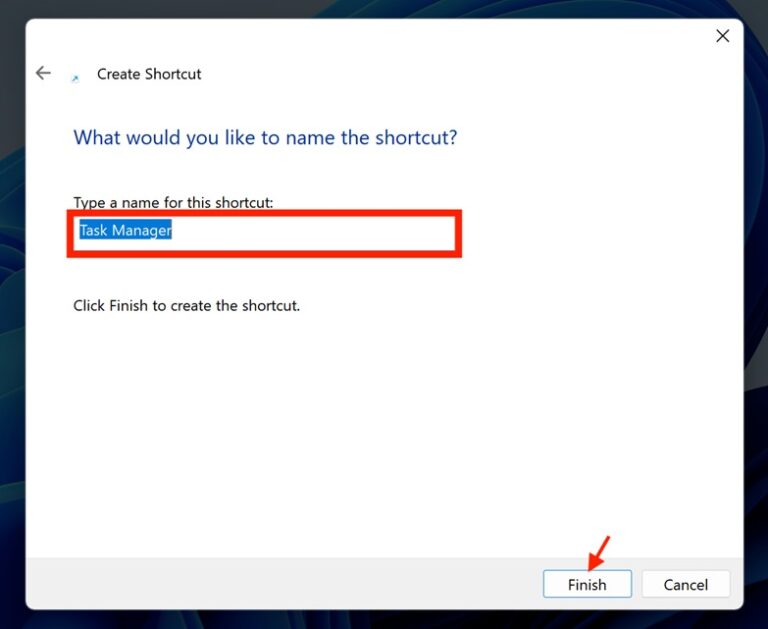
You’ll now see a new shortcut icon on your desktop with the name you provided (e.g., “Task Manager”).
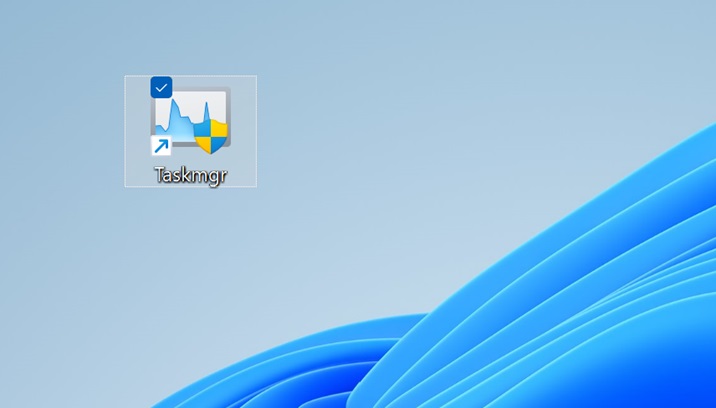
Now, double-click on the shortcut icon to instantly launch Task Manager. With this shortcut, you can easily monitor system performance, manage applications, and troubleshoot issues whenever needed.
Conclusion
And with that said, here comes the end of this comprehensive guide. By mastering various methods to open Task Manager in Windows 11, you’ve equipped yourself with valuable troubleshooting skills. No matter the issue you encounter on your computer, whether it’s a frozen application or a performance problem, you can now swiftly access Task Manager to identify and resolve the issue.
Frequently Asked Questions (FAQs)
Q1. Can I customize Task Manager in Windows 11?
Yes, you can customize Task Manager to display additional information and metrics beyond the default view. To do this, simply open Task Manager and click on “More details” to expand the view. Then, navigate to the “Options” menu to select which columns to display and customize the layout according to your preferences.
Q2. Is Task Manager available in Windows 11 Home Edition?
Absolutely, Task Manager is a core utility available across all editions of Windows 11, including the Home edition. Whether you’re a home user or a professional, you can access and utilize Task Manager to monitor and manage system processes efficiently.
Q3. Can I end system processes using Task Manager?
Yes, Task Manager empowers users to end unresponsive processes and manage system resources effectively. By accessing the “Processes” tab in Task Manager, you can identify resource-intensive applications or processes and choose to end them if necessary.
Q4. Will opening Task Manager affect my system performance?
Generally, simply opening Task Manager itself has a negligible impact on system performance. However, actively using Task Manager to monitor and manage system processes may utilize some system resources, especially if you’re running on low-end hardware or dealing with numerous background processes.
Q5. Is it safe to end processes in Task Manager?
While terminating processes in Task Manager can sometimes be a necessary step to resolve system issues or alleviate performance bottlenecks, it’s crucial to exercise caution. Ending critical system processes can destabilize your system and lead to unexpected behavior. It’s recommended only to end processes you’re familiar with and avoid terminating essential system processes unless necessary.
Q6. Can I use Task Manager to monitor my computer’s real-time performance?
Absolutely! Task Manager in Windows 11 provides real-time monitoring of various system metrics, including CPU usage, memory usage, disk activity, and network activity. Simply open Task Manager, navigate to the “Performance” tab and find detailed graphs and information about your system’s performance.
